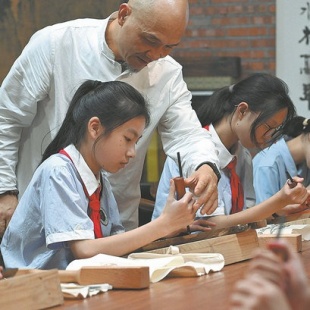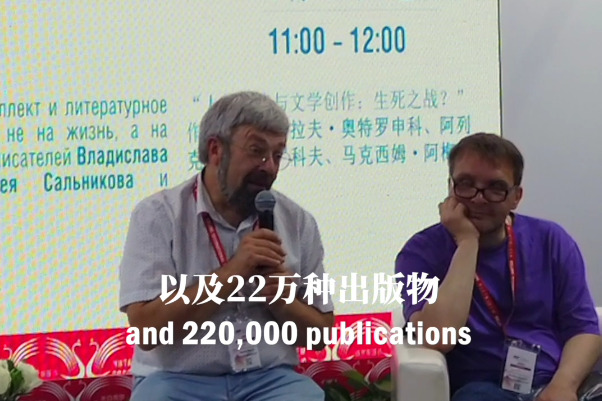Young people drawn increasingly to cherished traditions
Social media portals spread awareness of intangible cultural heritage


In October, Bie Chuancheng left her job to begin visiting guardians of intangible cultural heritage and producing short videos featuring these artisans.
Bie, a member of the post-1995 generation, had worked at a fashion company in Shanghai.
Her ambitious goal is to visit 100 inheritors of such heritage to advocate for 100 Chinese intangible cultural heritage items and skills in her own way.
"I want to present the nation's cultural heritage in an engaging, trendy, practical and modern way. I want to bridge the gap between intangible cultural heritage and modern life from my perspective, enabling young people to experience the practical application of this heritage in their daily lives," she said.
The first inheritor she visited was Wang Rulan, a national-level inheritor specializing in crafting frameless lanterns in Taizhou, East China's Zhejiang province. In February, Wang took part in a China Central Television program highlighting traditional Chinese crafts.
In her video, which received more than 40,000 likes, Bie states: "The frameless lanterns are made entirely from mulberry paper without any supporting structure. A total of 72 procedures are required to produce a single piece of the paper, and tens of thousands of needles are used to complete a lantern."
Wang, 87, who has spent more than 60 years making these intricate lanterns, was recognized in 2018 as an inheritor of the fifth batch of national-level intangible cultural heritage.
Bie said: "Wang's dedication to this craft is unwavering. During holidays, she warmly welcomes anyone interested in visiting her home to see the lanterns. She has been incredibly supportive of my efforts. Making these lanterns is time-consuming, and she even prepares steamed sweet potatoes for me to eat and invites me to stay at her home."
Intangible cultural heritage artisans are always willing to share and spread their knowledge to young audiences, Bie said. More important, she said there is a growing interest among the younger generation in learning about such heritage through social media.
Within a few months, Bie's account on Xiaohongshu, the Chinese lifestyle platform, had attracted more than 40,000 followers and over 170,000 likes and saves.
"Over 90 percent of my followers are younger than 35. Many young people are genuinely interested in intangible cultural heritage, but previously, there were only a limited number of ways in which people could learn about this ancient craft," she said.
"Over the past year or two, there has been a surge in related content on social media, leading to a heightened awareness of traditional culture among young people."
The 2023 Intangible Cultural Heritage Data Report released by the Douyin short-video platform shows the platform aired an average of 19,000 livestream broadcasts on intangible cultural heritage every day, with an average of 13 new items per minute that included content related to this topic.
Furthermore, in 2021 and 2022, the total number of views of videos related to national-level intangible cultural heritage projects shown on the platform reached 372.6 billion.
The 2019 Digital New Youth Research Report indicated that nearly 90 percent of the young people surveyed expressed an interest in traditional culture.
When it comes to learning about traditional culture, 80.5 percent of young people rely on online media as their primary source of knowledge, the report said.
Gao Lu, a lecturer at Nanjing Normal University's School of Journalism and Communication, said social media platforms, especially those showing short videos, have become the main way in which young people obtain information about traditional culture.
Official data indicate that as of December 2022, the number of short-video users in China reached 1 billion. Gao added that new media technologies present traditional culture to young people in unprecedented ways, leading to increased interest and a deeper understanding of this subject.





































